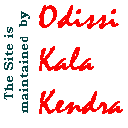|
|
|
 |
Heritage of Dance |
|||
|
The origins of Indian
dance are shrouded in the mist of antiquity. The dainty
figurine of the dancing girl discovered in the 4000-year
old ruins of Mohenjodaro is the earliest artifact
relating to dance. The countless carvings, paintings and
icons of dance in temples and shrines all over the
country bear witness to the development of dance in the
centuries gone by. Exquisite paintings of primitive dance
in Pachmarhi caves, apsaras or celestial dancers at the
gateways of Sanchi and Bharhut, in Bagh, Ajanta-Ellora,
the sculpture of Chidambaram and Khajuraho, or the temple
walls of Belur and Halebid have to be seen to be
believed. Here, captured in lime and vegetable dye, in
carved stone, in sculptured friezes and in giant granite
carvings, can be seen the splendid blend of movement and
rhythm that is Indian dance. In India, dance has been used both as a vehicle of worship and as an expression to man’s most profound emotions his various states of mind. In keeping with thesacred nature of Indian dance, there has been the tradition of temple dancers. The Devadasis, literally handmaids of god, were dedicated to the temples of South India at an early age and led austere lives to perform their sacred task. The Maharis, traditional exponents of Odissi, were also attached to temples. The supreme manifestation of the essence of Indian dance is the image of Shiva as Nataraja —the jeweled ornament of the crescent moon a symbol of complete control of the senses, the serpentswound around his arms and wrists proof of his control over vital life forces, his foot raised high over the wicked demon a symbol of triumph over the ego. The great historian of Indian art, Ananda Coomaraswamy described the dancing Shiva as "the clearest image of the activity of god which any art or religion can boast of. |
|||